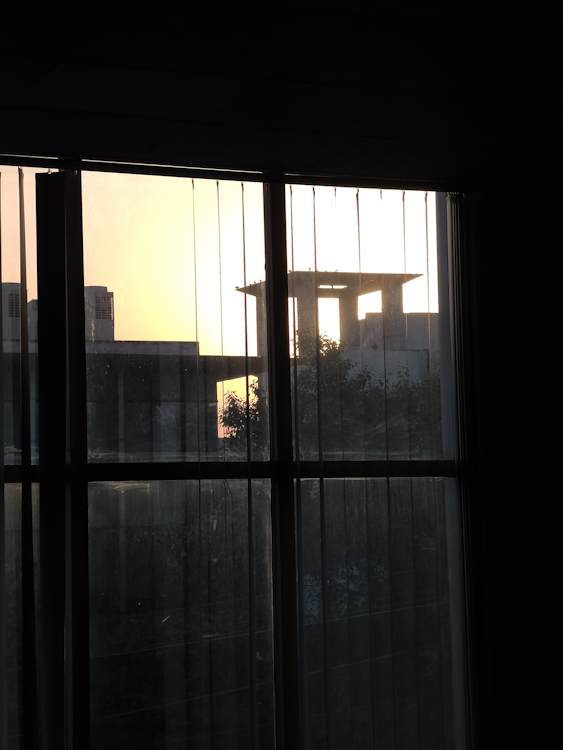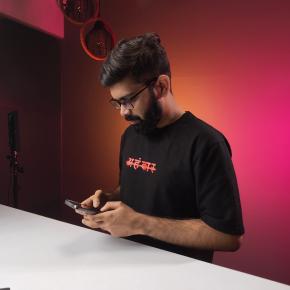Beebom Score
Not too long ago, I raved about this $250 Indian phone that seemed like the miracle worker in the segment. Dual AMOLED screens, an iPhone-like Action Button, Dimensity 7300X, and more — the whole package. Well, thanks to Lava Mobiles, I finally have my hands on the Agni 3. After using the device as my daily driver for around a week, I have gathered a trove of insights about this affordable phone. So, is it as good as it seems? Or is it just a facade to mask some critical issues? Let’s find it all out in my detailed Lava Agni 3 review!
Before we get into my experience, here’s a quick rundown of the specifications of the Lava Agni 3:
| Specs | Lava Agni 3 |
|---|---|
| Display | Primary Display: 6.7-inch 10-bit AMOLED, 1.5K (2652 x 1220), 120Hz, HDR, 429 PPI Secondary Display: 1.7-inch 8-bit AMOLED, HVGA (336 x 480), 336 PPI |
| Dimensions | 163.7 x 75.53 x 8.8 mm |
| Weight | 212 grams |
| Processor | MediaTek Dimensity 7300X (4nm) |
| Storage | 128GB and 256GB UFS 3.1 |
| RAM | 8GB LPDDR5 |
| Rear Camera | 50MP primary with OIS + 8MP ultra-wide + 8MP Telephoto with 3x optical zoom |
| Front Camera | 16MP |
| Video | Up to 4K at 30FPS |
| Connectivity | Wi-Fi 6E, Bluetooth 5.4, 14 5G Bands, GPS, GLONASS, NavIC |
| Software | Android 14-based stock Android |
| Protection | IP64 |
| Battery | 5000mAh, 66W fast charging |
Familiar Design With Extra Screen Play

At first glance, the Agni 3 bears a striking resemblance to the Xiaomi Mi 11 Ultra, thanks to the rear panel design. From the identical rectangular camera module to the dual screen housed within, it’s a doppelganger, albeit a cheaper one. I have with me the Heather Glass colorway, and it’s quite the stunner.
This color option has the phone enveloped in a subtle Indigo shade. While the shade is matted out at the glass back and feels like satin to the touch, it’s glossier on the plastic frame. The glass back keeps the phone from feeling cheap. The matte finish on top keeps it from becoming fingerprint-infested.
Moreover, the buttons seem too clicky and the placement is good enough. On the right, there is the power button and the new Action button (more on this later). Meanwhile, the left side houses the volume rockers.
Lava Agni 3 is also heavy at 212 grams, but the spot-on weight distribution negates the feeling of holding a bulky phone. That curved display makes it handier as well, and it feels right at home in my hands. It’s not that slippery either, and I haven’t dropped or bumped it against anything once during my time with it, and that says a lot.
Lava already went out of its way to provide the best possible display in the segment with the Agni 2 last year. So, they had to do something different with the Agni 3, and they did. The primary display is a curved 6.7-inch 10-bit AMOLED display which offers more than enough estate to work with. The 120Hz refresh rate is also nice to have at this price point.


The colors are vibrant enough, and I liked the deep blacks presented when watching Godzilla Minus One. The presence of Dolby Atmos-backed dual-stereo speakers made multimedia consumption quite delightful. These speakers are really loud and clear as well, and I barely ever had to take to my earbuds.
The display didn’t require any calibration and is set to the Natural tone out of the box. Plus, I didn’t notice much of a difference in Vivid mode.
The display is also bright enough, hitting 1150 nits of its claimed 1200 nits peak brightness. I didn’t have any problems viewing it under direct sunlight or a brightly lit indoor environment. The screen is not that reflective either and thankfully doesn’t double down as a full-fledged mirror.
I noticed that the curved display is finely tuned and there were no accidental touches. However, Lava has not talked about any display protection on top, which is odd. Neither does it come with a pre-applied protector out of the box. So, I used the device without any protection and I can say that it’s not a scratch magnet. While there are some sneaky micro scratches, there’s none that’s too evident.
Oh, also, the in-display fingerprint sensor is quite responsive even with wet fingers. With that, we move to the secondary display, which is the talk of the town.

For someone like me who likes to place their phones face down on a desk for the most part to avoid distractions, the 1.7-inch secondary screen provides enough real estate to stay up-to-date. I find a secondary screen to be better than Nothing Phone’s flashing Glyph lights. And I was impressed by the quality of the secondary display as well. It’s plenty bright and sharp, making notifications easy to read without having to lift your phone or squint your eyes.
However, it’s not merely a notification reader as there are seven widgets to take advantage of right now. There’s the much-needed camera widget that turns the secondary display into a viewfinder to capture selfies with the primary sensor. Then, there’s the mini “Now Playing” music widget, along with a voice recorder, step tracker, stopwatch, alarm, and timer.
Just like you see on the cover screen of flip phones like the Motorola Razr 50 (impressions), there are Cute Pets to interact with. Although, you’re only limited to one pet for now, which is a bummer. You can also customize the screen further by setting up a charging animation as well as an Always-on display. The Always-on display shows the date, time, and battery level.
iPhone-Like Action Key Is a Nice Touch

Unlike the iPhone’s Action button, spending time with the Lava Agni 3 made me realize how useful such a button can actually be. While it took me a while to get used to the extra button, it does come in very handy.
Moreover, you get an extra ‘double tap’ gesture on top of the hold and single tap gestures. You can either assign the regular Silent/Ring, Start recording, Open flashlight, Screenshot, and Open SOS actions to these gestures, or simply set them to open a specific application.
For example, I use Google Pay almost every day for grocery shopping or paying for rides and hence assigned it to the single click gesture. Meanwhile, for screenshotting, I use the double-click gesture. Finally, the long press gesture acts as an alert slider for me by shuffling between the Silent and Ring modes.
Similarly, you can personalize this Action button on the Lava Agni 3 and make the most out of this new utility.
Squeaky Clean Stock Android Skin

Out of the box, the Lava Agni 3 runs on an Android 14-based stock skin, with the build number LAVA_LXX518_SW_U_V10_HW_V1.0_20240930. And this version was highly unpolished. From app opening and closing animations to even simply scrolling through the settings, there were jitters and micro-lags. I also faced a bug where even if the phone was set to 120Hz, the lock screen would still operate at 30Hz, and browsing through notifications almost gave me a headache.
The camera also did not perform as expected, capturing highly noisy and occasionally blurry shots. There would also be a reddish tinge in photos captured through the rear sensor (more on this later). One would just expect better from the Sony IMX766, which is a decent enough sensor.
However, most of my issues with the UI were fixed with the LAVA X10 A14 V11 update (54.59MB), which landed not even a week after the phone’s launch.
Now, while this was a solely camera-focused update, it brought along additional perks. I don’t see those pestering jitters or lags in the UI anymore. The animations are more consistent throughout, and I also noticed a slight improvement in the haptic integration. Previously, it felt harsher, which is more controlled now and feels nice. The lock screen bug that limited it to 30Hz is also…eh...kind of fixed now. It doesn’t happen all the time is what.
While the stock Android experience is squeaky clean, it’s not Motorola’s Hello UI (review) or the Nothing OS. There are still lots of refinements needed here, but it’s far from being a bad software experience. Lava promises 3 years of major OS updates and 4 years of security patches, and based on what I see, the Agni 3 is off to a good start.
The Right Amount of Performance

Lava has used the MediaTek Dimensity 7300X for its Agni 3, and I don’t think there could have been a better choice here. This is the same chip that we see on the much pricier Razr 50 as well and is one of the cheapest chips to support dual screens out there.
While the Snapdragon 7 Gen 1 on the Razr 40 supports dual screens as well, it’s just not as powerful, and I’m happy that Lava went with the 7300X instead. In addition, the 3nm processor pairs up with up to 8GB LPDDR5 RAM and 256GB of UFS 3.1 storage.
For the price, this chip more than delivers, and I didn’t have any complaints with it. While you will notice some minor stutters during highly extensive multitasking, it still gets the job done without breaking much sweat. As usual, I had around 25 or so tabs open on Chrome and almost the same number of apps running in the background.
The RAM management is also pretty good, with even split-screen app pairs resuming without any hiccups. Those benchmark numbers were also as expected from a device in the segment. Take a look:
One thing I did notice was that the phone stayed surprisingly cool throughout. During normal usage, even in sunny outdoors, the phone barely crosses 36 degrees Celcius. When running harsher benchmarks like 3DMark Wild Life Extreme Stress and CPU Throttling tests, temperatures would barely ever cross 40 degrees C, occasionally peaking at 42 degrees C.
The Dimensity 7300X along with its Arm Mali-G615 GPU can also get some decent gaming in. If you’re a casual gamer who can get by with 60 FPS in games, the Lava Agni 3 won’t disappoint you. In CoD Mobile, you are limited to the High + MAX setting for 60FPS. Meanwhile, the Very High + Very High combination will get you down to 40FPS with a major boost in visuals.
Meanwhile, on BGMI, you’re limited to Smooth + Extreme which is capped at 60FPS. Meanwhile, the HDR + Ultra setting delivers 40FPS. Additionally, Genshin Impact is playable on the device as well, averaging at around 45FPS. After almost 2 hours of gaming, the temps were still lingering around the 40-degree C mark.
Average Cameras That Can Be Better

The Lava Agni 3 sports a triple rear camera setup, with a 50MP Sony IMX766 driving the setup. Meanwhile, there’s a secondary 8MP ultra-wide sensor alongside an 8MP telephoto sensor with 3x optical zoom.
The primary sensor captures details well, although there is a reddish tinge in most photos, which looks odd. The latest update fixes this significantly, although there is still an underlying off-tone there. Details are good though, although there is some noise, which has also been fixed to some extent with the most recent update. The dynamic range is not the best with the shadows and highlights being slightly suppressed. There’s still quite a bit of scope for improvement here.
On the other hand, the 8MP ultra-wide, as I had expected, just doesn’t capture good details. If you really want to capture more in your shots, it’s alright for those moments. But, you will see terrible smudging of details upon zooming in. The colors are more natural though, which is good.








The 8MP telephoto sensor isn’t extraordinary either, and the reddish hues make a comeback for a second round. It was more evident when capturing portraits, but thankfully, the update fixed this too. Although, you will still notice skin smoothening that makes you look like a polished rock at times.
At the front, the 16MP sensor doesn’t perform beyond expectations. You see okayish details, but it’s heavily inconsistent. While it captures natural skin tones at times, the other times, it goes all out and captures overprocessed shots that look awful. Some optimization here and there should further fix these issues.
Right now, this is not the most reliable camera setup, and I wouldn’t keep big expectations from the Lava team. As for videos, it can shoot at up to 4K at 30FPS using the rear setup. There’s also OIS, which is decent, but not the best performing out there. During extreme movements, you will still see certain jerks and sudden shifts in movement, which don’t look good. There are focus-hunting issues at times when the frame is plagued with numerous subjects and objects. The front sensor is limited to 1080p at 30FPS.
Battery That Doesn’t Run Out as Easily

The Lava Agni 3 features a 5,000mAh battery unit, and boy does it have an impressive standby time. I charged it to 100% on a Friday and used it for around 3.5 hours throughout the weekend. Most of my screen time was purely spent on my laptop, with the phone mostly just lying around.

At night, I spent my time watching YouTube videos on it. By the time it was Sunday, I was still left with around 15% battery, which was when I decided to charge it again. So, in continuous usage, the phone can easily deliver around 6 hours of SoT or a full day of usage.
The 66W fast charging is also quite fast and it took me around 40 minutes to take the battery from 10% to 100%.
Lava Agni 3 Verdict: A Charming Exception in the Segment
The mid-range phone market is a little too saturated, and there are barely any phones that stand out from the crowd. Nothing tries doing things differently with its transparent design and glyphs as seen on the Nothing Phone 2a (review), and now, Lava has raised the bar further with the Agni 3.
While the brand is known to offer specification-rich phones at affordable prices, the Lava Agni 3 is going out of its way to deliver even more. The dual AMOLED display is the stand-out feature. But, additional perks like the Action button and a good performance in the segment can’t be overlooked either.
Besides, I was pretty impressed by the brand taking software updates seriously, and rolling one out already in a week of release. The cameras do need a lot more work, but it’s good to see Lava working towards it. Overall, offering more than what you pay for, the Lava Agni 3 is a great mid-ranger that mostly won’t let you down.
With that said, what do you think of Lava’s latest phone? Drop your thoughts in the comments down below.


















